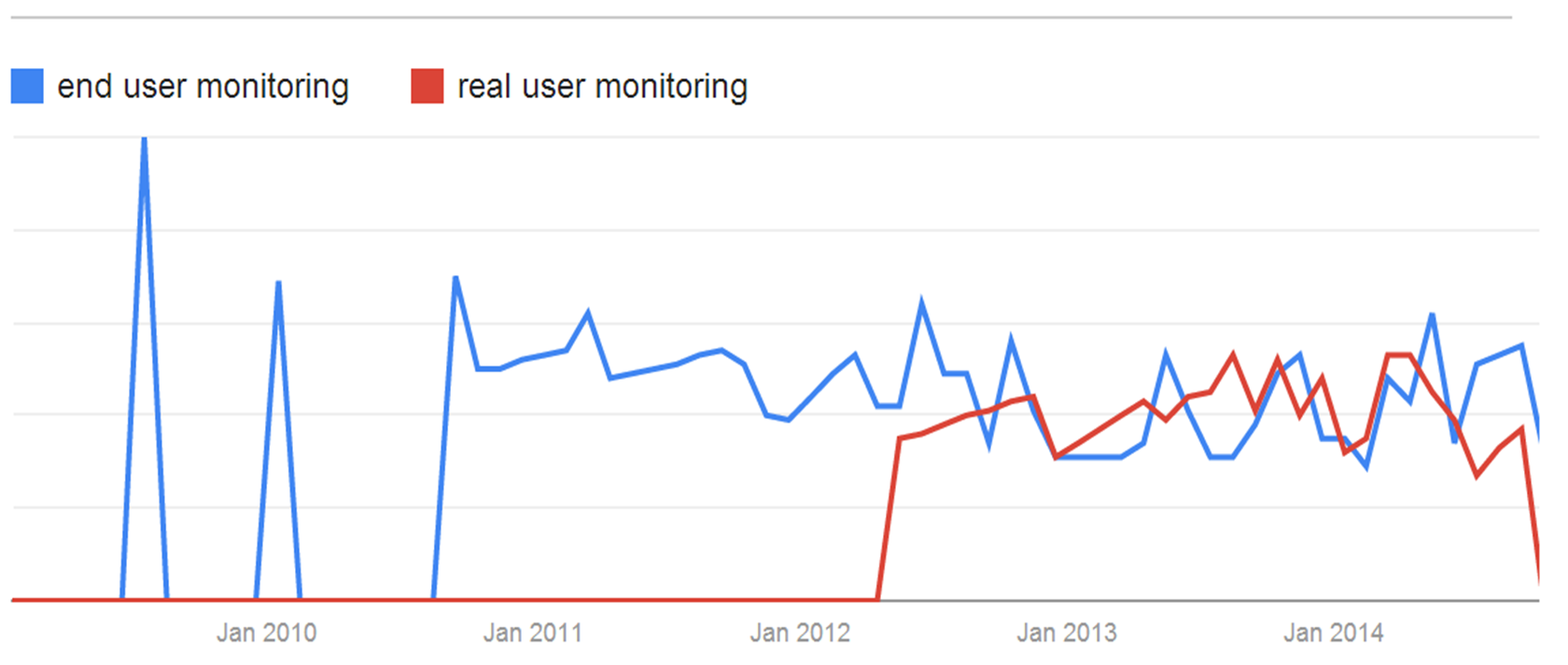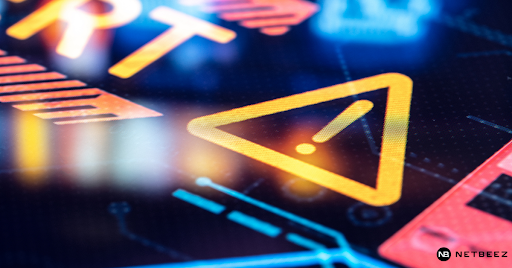During the last two years, we have had the privilege and opportunity to talk to dozens of network and application engineers and there is no doubt in my mind that real-user monitoring (RUM) is becoming increasingly important for every enterprise. The quantified results for some of these interviews are summarized in a previous blog post. A relatively large number of RUM tools have emerged in the last few years, NetBeez included. In addition, existing monitoring suites have introduced new RUM features and product lines. I started wondering how this new generation of monitoring tools came about and why now. Obviously there is a market demand for them. But again, how did this demand come about, and why are RUM tools becoming more relevant?
The terms “end-user monitoring” and “real-user monitoring” started becoming popular at the turn of this decade as shown in the Google trends graph shown below.

There are two main reasons behind the take-off of RUM tools.
Up/Down Monitoring Tools Have Reached Their Limit
Up/Down monitoring tools will always be necessary in order to know the status of network devices. The likes of Solarwinds, IBM Tivoli, Nagios, and HP Node Manager serve network engineers excellently. However, they have been in market for decades now, and pretty much whatever could be done has been done in this space.
Network Complexity Keeps Increasing
The cloud revolution has forced companies of all sizes to embrace cloud applications that run either on a private or public cloud. The end-user might be connected to the cloud through a VPN, an MPLS circuit, dark fiber, or a private circuit. Employees might be accessing applications or email from home, the office, or from a mobile device on the go. In addition, applications might run on a private or a public cloud.
As you can understand, the network engineer is not dealing with a private network any longer, but rather with a hairball of routers and switches with some being under his control (private circuits, enterprise networks) and some not (Internet, public cloud). The latter is becoming more common. There are two consequences of this new reality:
- There are many more moving pieces in the network than a decade ago, which make the detection and troubleshooting process more complicated
- The network engineer finds out about network slowness or outage problems only after the end-user reports them (often, the network engineer is called to prove that it’s not the network!)
Evidently, RUM is the only way to detect network and applications issues as soon as they occur while having all the necessary data to troubleshoot them. RUM has to be done in a vendor-agnostic way and must be able to cover as many end-users as possible.
At the end of the day: Up/Down Monitoring + Real User Monitoring = Total Monitoring Coverage





